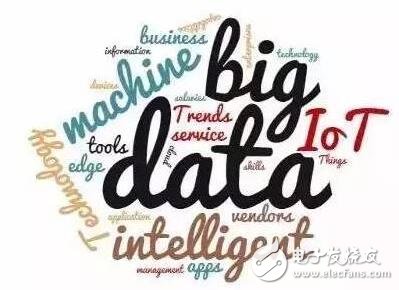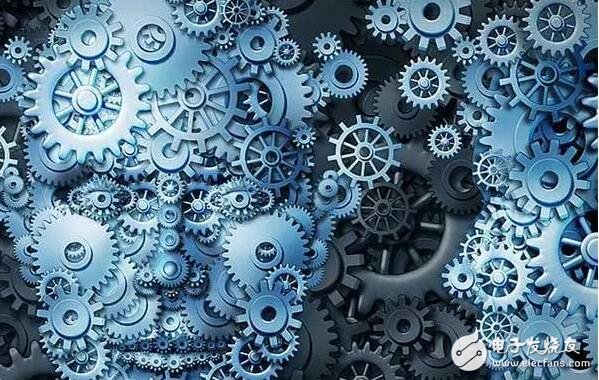Do you know the top ten trends in big data in 2017?
There is no doubt that the big data market will continue to grow, but how should companies apply big data? There is currently no clear answer. New big data technologies are entering the market, and the use of some old technologies continues to grow. This article covers the top ten trends in the future of big data, which may have a significant impact on the big data market in 2017 and beyond.
Experts predict that machine learning, predictive analytics, the Internet of Things and edge computing will have a profound impact on big data projects in 2017 and beyond.

Open source
Open source applications such as Apache Hadoop and Spark have dominated the big data world. A survey found that by the end of this year, nearly 60% of Hadoop clusters will be put into production. Forester's research shows that Hadoop usage is growing at a rate of 32.9% per year.
Experts say that in 2017 many companies will continue to expand their Hadoop and NoSQL technology applications and find ways to increase the speed of processing big data.
2. Memory technology
Many companies are trying to accelerate big data processing, and one of the technologies they use is memory technology. In traditional databases, data is stored in storage systems equipped with hard drives or solid state drives (SSDs). Modern memory technology stores data in RAM, which greatly increases the speed of data storage. The Forest Research report predicts that the in-memory data architecture will grow by 29.2% annually.
At present, many companies provide in-memory database technology, the most famous are SAP, IBM and Pivotal.
3. Machine learning
With the continuous improvement of big data analysis capabilities, many companies have begun to invest in machine learning (ML). Machine learning is a branch of artificial intelligence that allows computers to learn new things without explicit coding. In other words, it is to analyze big data to draw conclusions.
Gartner said that machine learning is one of the top ten strategic technology trends in 2017. It points out that today's state-of-the-art machine learning and artificial intelligence systems are moving beyond traditional rule-based algorithms to create systems that understand, learn, predict, adapt, and even operate autonomously.
4. Predictive analysis
Predictive analytics is closely related to machine learning, and in fact ML systems often power predictive analytics software. In early big data analytics, companies looked at what happened in the past by reviewing their data, and later they began using analytics tools to investigate the causes of these things. Predictive analytics goes a step further, using big data analytics to predict what will happen in the future. PwC's 2016 survey shows that only 29% of companies currently use predictive analytics, and that number is not large. At the same time, many vendors have recently introduced predictive analytics tools. As companies become more aware of the power of predictive analytics tools, this number is likely to increase dramatically in the coming years.
5. Smart APP
Another way for businesses to use machine learning and AI technology is to create smart applications. These applications use big data analytics to analyze the user's past behavior and provide personalized service to users. The recommendation engine is an example that everyone is very familiar with.
In the list of the top ten strategic technology trends in 2017, Gartner ranked smart applications second. David Cearley, vice president of Gartner, said: "In the next 10 years, almost every app, every application and service will apply AI to some extent.
6. Smart security
Many companies also incorporate big data analytics into their security strategies. Enterprise security log data provides unprecedented cyberattack information that companies can use to predict and prevent future attacks that can occur to reduce the damage caused by the attack. Some companies are combining their security information and event management software (SIEM) with big data platforms such as Hadoop. Other companies have chosen to turn to companies that offer big data analytics capabilities.

KNLN6-63 Residual Current Circuit Breaker With Over Load Protection
KNLN6-63 TWO FUNCTION : MCB AND RCCB FUNCTIONS
leakage breaker is suitable for the leakage protection of the line of AC 50/60Hz, rated voltage single phase 240V, rated current up to 63A. When there is human electricity shock or if the leakage current of the line exceeds the prescribed value, it will automatically cut off the power within 0.1s to protect human safety and prevent the accident due to the current leakage.
leakage breaker can protect against overload and short-circuit. It can be used to protect the line from being overloaded and short-circuited as wellas infrequent changeover of the line in normal situation. It complies with standard of IEC/EN61009-1 and GB16917.1.
KNLN6-63 Residual Current Circuit Breaker,Residual Current Circuit Breaker with Over Load Protection 1p,Residual Current Circuit Breaker with Over Load Protection 2p
Wenzhou Korlen Electric Appliances Co., Ltd. , https://www.zjthermalrelay.com